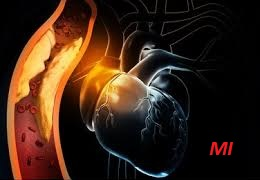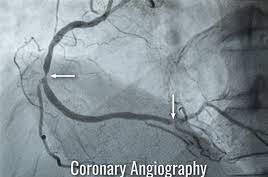No products in the cart.

Heart Attack Symptoms, Diagnosis, and More
Exactly what is a heart attack? I will endeavor to explain just before getting into the specifics of Heart Attack Symptoms.

To put it simply, what causes a heart attack?
Myocardial infarction (MI) occurs when the blood supply to the heart cuts off suddenly , leading to the death of the heart muscle. The heart cannot operate without oxygen-rich blood. Blockage of the arteries supplying the heart can occur if plaque (made of fat, cholesterol, and other chemicals) accumulates in these blood vessels.
Such condition is a true medical emergency, only emergency medical personnel can exercise it. The longer a person goes without receiving treatment to improve blood flow to the heart, the more lasting damage is done to the heart muscle, and eventually, pump blood activity stops and then death occurs. Most heart attacks are life threatning.
Common Symptoms:

While chest discomfort was once assumed to be a universal indication of MI, decades of research have shown that this isn’t always the case. In reality, there is considerable variation in the manifestation of symptoms depending on characteristics such as age, gender, smoking , stress and general health conditions.
Here is the most up-to-date scientific knowledge regarding the signs of such heart disease so that you can make the best decisions for yourself or your loved ones regarding when to seek medical attention.
Causes and warning signs of an Early Heart Attack:
Damage to the heart is greatest in the first two hours after a heart attack, making it imperative that any early indications be taken seriously. If feel such condition, the sooner you get care, the better.
The Society of Cardiovascular Patient Care reports that up to half of all heart attack patients experience warning signs before the attack begins.
Some of the warning signs or risk factors of an impending heart attack include:

- “stuttering” chest pain, also known as mild, intermittent pain or discomfort in the chest.
- The affect of discomfort in your shoulders
- Discomfort in the neck or jaw
- Sweating
- Intestinal distress
- Dizziness, nausea, and vomiting
- Breath difficulty
- A sense of “impending disaster.”
- Cold sweat
- severe nervousness or confusion
Remember that the signs of MI can differ from person to person and even from one heart attack to the next.
Signs of Such Disease in Men:
Men are about twice as likely as women to have a attacks. Also, heart attacks are more common in men than women at younger ages. A person’s risk of having a heart attack increases if they smoke cigarettes have high blood pressure history, or high cholesterol, are overweight or have a family history of cardiovascular disease.
Men’s heart attack indications include:
typical chest pain/pressure, described as a squeezing sensation, heaviness, or uncomfortable pressure in the chest that may come and go or remain persistent and powerful, as if “an elephant” were sitting on your chest.
- Discomfort or pain in the upper torso (the arms, the left shoulder, the back, the neck, the jaw, or the stomach).
- a pounding or erratic heartbeat
- a feeling of indigestion in the stomach
- Signs of breathlessness that persists even during rest
- Feeling faint or dizzy.
- Feeling hot and cold simultaneously
Signs of a Heart Attack in Women
Recent medical studies have shown that females have a higher risk of suffering indication other than those described above, in addition to the possibility that they will exhibit the symptoms described above. These characteristics are less likely to be displayed by females.
- Aching all over the chest, but particularly in the middle of the chest.
- Indigestion-like signs.
The following are signs that are more commonly associated with females:
- Chest pain, dizziness, and nausea preceding the mayo cordial infraction (MI).
- Discomfort is felt everywhere in one’s body, including the back, shoulders, neck, arms, or stomach.
- Nausea and vomiting.
- sensation of body Discomfort
Detection of a Heart Attack in Its Early Stages
As soon as diagnosis process and opinion of cardiologest complets, hospitalization is required. You’ll need to be admitted to a cardiac catheterization lab, emergency room or an ACCU before a diagnosis can be made and therapy initiated.
Electrocardiogram

An electrocardiogram (ECG) is a crucial diagnostic tool when MI attacks are suspected. Do it quickly, preferably within the first 10 minutes of hospitalization.
An electrocardiogram measures the electrical activity of your heart. As your heart beats, it generates little electrical impulses. An electrocardiogram records these electrical impulses and then read by a physician to assess heart health.
An ECG doesn’t hurt and takes approximately 5 minutes to complete the process of diagnosis. A cardiologest will tap electrodes, small metal discs, to your arms, legs, and chest while you do the test. The electrodes provide their electrical signals to the ECG equipment through wires.
An electrocardiogram is necessary because…
- An electrocardiogram is the first line of diagnostics for identifying the type and severity of a heart attack.
- It aids in the verification of a heart attack diagnosis
- You can get the best care for your heart attack by knowing the specific attack you’ve had, and this test can help with that.
Other Blood tests helpful in Heart Attack Diagnosis:
Your doctor can perform several further tests to identify the type and severity of MI you’re experiencing. Here, we’ll discuss some crucial diagnostic tests and how they can help.
However, it needs more tests, once the initial treatment begins and the healthcare provider stabilizes the patient.
Examination of the blood
Certain proteins slowly seep into the blood after a heart attack because of the damage done to the heart. Enzymes are special proteins that aid in controlling various biochemical processes and are essential for prevention of heart health.
- Health professional will collect a blood sample to check for these heart proteins if your doctor suspects a heart attack (known as cardiac markers).
- Cardiac troponin is the most widely used protein assay. Over many days, your blood will be tested to determine your troponin level.
- It will assist in evaluating the extent of heart failure and how effectively the course of medication works.
X-ray of the chest
If you suspect a heart attack, but you also have other symptoms (such as a pneumothorax or a collapsed lung), a chest X-ray may be helpful (pneumothorax).
A chest X-ray can also reveal other heart attack-related problems, such as lung fluid buildup (pulmonary edema).
Echocardiogram
An echocardiogram is a diagnostic imaging procedure that visualizes the heart’s interior by employing sound waves.
This helps you to identify, which parts of your heart damages and how that damage affects your heart’s ability to function.
A coronary angiogram

If you suspect a blockage or narrowing of your coronary arteries, coronary angiography can help you confirm your suspicions and pinpoint its location.
Obviously, catherization is the only process to test one of your blood arteries in the groin or arm. Experts use X-rays to help guide the catheter into the coronary arteries.
Use WThe catheter to transport contrast agent , a specialized fluid. Because this fluid is visible on X-rays, doctors may track its movement through the heart to pinpoint the location of any constriction or blockage. This information is useful for a cardiologist, a medical practitioner specializing in heart issues, and determining the best treatment for you.
Heart attacks involve discomfort
Pain in the middle or left side of the chest that lasts more than a few minutes or subsides and returns characterizes the vast majority of heart attacks. Discomfort can manifest as unpleasant sensations, including pressure, squeezing, fullness, and pain. A feeling of weakness, dizziness, or faintness. In addition, you can start to sweat uncontrollably.
Emergency medical services
Hence, In the medical world, a heart attacks is an emergency. Suppose you or someone else has a heart attack; dial 911 or your country’s emergency number immediately. In cases where a person suspects a heart attack, the average person waits three hours before getting medical attention. Many people with a heart attacks don’t make it to the hospital in time. Hospital having best cardiac center can manage most heart diseases more efficiently.




89 Comments